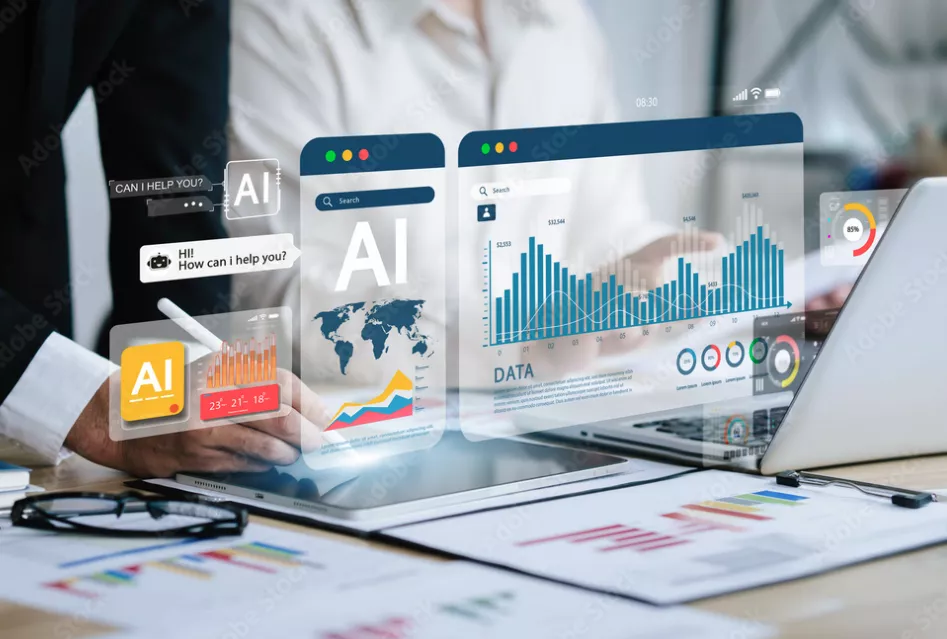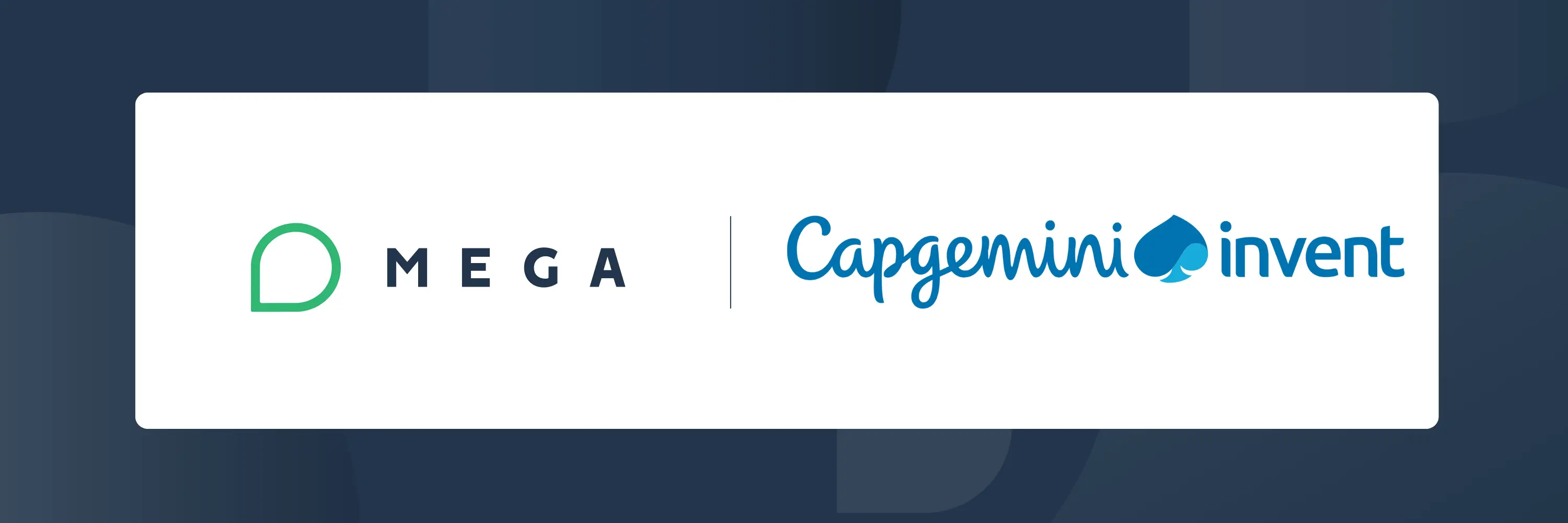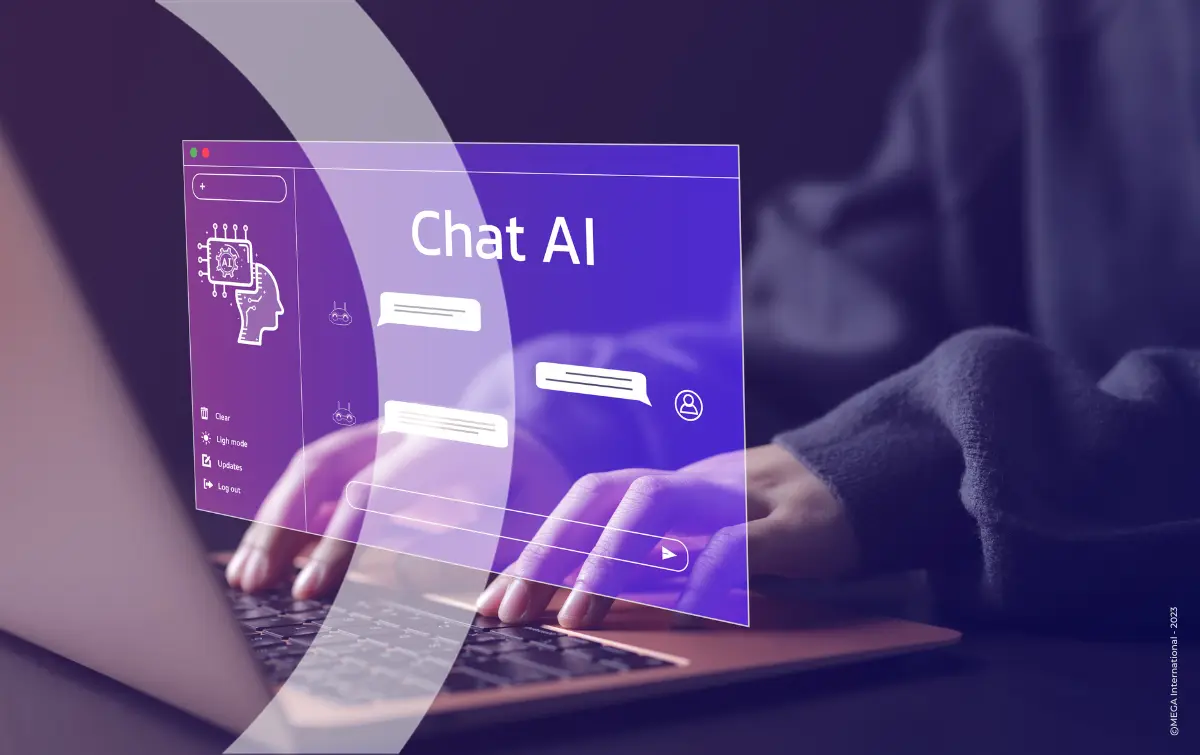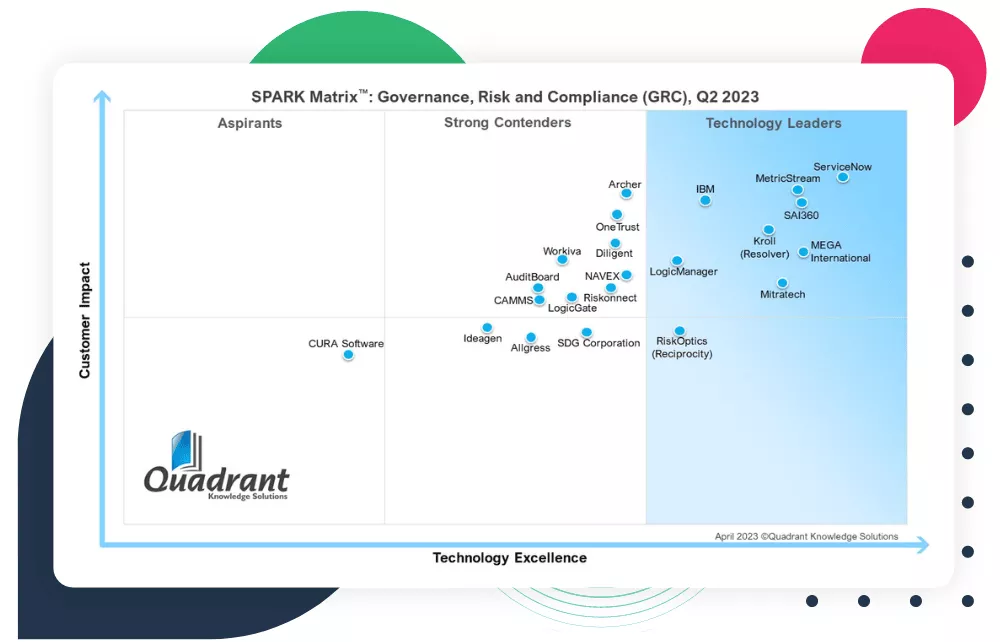
Navigating AI in Enterprise Architecture: From Chatbots to Copilots, Risks, and Future Potential
After discussing on how AI is revolutionizing Enterprise Architecture Management (EAM), Tom Sprenger, Senior Consultant in Business Technology at Capgemini Invent and Eva Jaidan, Head of Data Analytics and AI at MEGA will focus on LLM (Large Language Model) as an Assistant for Managing IT Architecture and the impact of generative AI assistants on the role of enterprise architects. This evolution brings both opportunities and challenges. In this exploration, we will delve into how LLMs can assist in managing enterprise architecture, balance the benefits and risks of AI, navigate the integration of AI into current systems, and envision the future of IT architecture with AI. We will also examine potential use cases and address the question: Is AI a threat to today's enterprise architects, or a catalyst for their evolution?

LLM as an assistant for managing Enterprise architecture
The terms of “chatbots” and “copilots” are becoming increasingly prevalent in discussions about AI in Enterprise Architecture Management (EAM). You may have come across terms like "copilots augmenting architects" or "chatbots assisting them," and wondered about the differences between the two. As AI technologies advance and integrate more deeply into enterprise systems, it is crucial to distinguish between these tools to leverage their unique benefits effectively.
Chatbots, enhanced by LLMs, are designed to handle daily job questions and interactions linked to a domain knowledge base. They can assist in creating a new project, guide the user through necessary steps, or help with documentation by fetching relevant information from the knowledge base. Available 24/7, chatbots provide on-demand knowledge about Enterprise Architecture (EA), frameworks, methodologies, and adapt to the user’s expertise level and language. This results in increased productivity and quality of onboarding new architects, and accelerates the journey of EA, known for its deep knowledge requirements and steep learning curve.
On the other hand, “copilot” in AI embodies the dual purpose of collaboration (“co”) and guidance (“pilot”). By this, copilots, also powered by LLMs, are designed to take actions and execute tasks in collaboration with the end user. They have access to data and platforms and can perform tasks under the guidance of the user. For instance, a copilot could assist in creating diagrams, suggesting the most suitable diagram type based on the user’s input, or identifying areas that require attention by analyzing patterns in data and highlighting anomalies. Copilots act as active partners in the process, leading the strategic implementation of technology within organizations.
In summary, chatbots and copilots, both integral components of AI, are transforming the way we approach daily job tasks and interactions. They work together to streamline operations, enhance productivity, and improve the overall user experience in the IT architecture domain.
Balancing Benefits and Risks: Navigating the Landscape of AI and LLMs
While AI, and particularly LLMs, offer numerous benefits, it’s essential to be aware of the potential risks associated with their use. Here are some key areas of concern:
Privacy Concerns and Biased Information
AI systems, including LLMs, necessitate a vast amount of data for training and operation. If this data includes sensitive information, it could lead to privacy issues. Therefore, data privacy and anonymization are paramount. The level of transparency and security of these AI systems can vary depending on their integration into existing systems.
AI systems and LLMs can unintentionally learn and propagate biases present in the training data, leading to potentially unfair outcomes or decisions. For example, if an AI used for hiring is trained on data from a company that has historically favored certain demographics, it may perpetuate this bias, resulting in unfair hiring practices.
Reliability and Security
AI systems may not always perform consistently, especially in scenarios they were not trained for. This unpredictability could pose risks in critical applications. For instance, an AI used for autonomous driving needs to be reliable in all weather and traffic conditions, not just those it was trained on. Also, AI systems could be vulnerable to malicious attacks, which could manipulate their operation or steal sensitive information.
Misinformation and Disinformation
Both copilots and chatbots generate outputs based on the input data and queries. However, there’s a risk of hallucination - the generation of information that is not present in the input data. Factors such as the temperature parameter, which controls the level of creativity of the AI’s output, are crucial in this regard. In any case, the content generated by a generative AI assistant must be reviewed and tuned before being used as there are still remaining issues to address, in particular in terms of correctness.
Ethical and Legal Considerations
If an LLM model from a proprietary source like OpenAI is used, the control over data and the model’s inner workings might be limited. While these models are typically robust and well-tested, the transparency regarding data usage and the model’s decision-making process might not be fully clear. This could potentially lead to unforeseen risks and challenges in ensuring data privacy and security. Conversely, if a custom local LLM model is developed, fine-tuned, hosted, and managed with full control of the data, there is a higher degree of transparency and control. This allows for a more thorough understanding of the model’s decision-making process and a better assurance of data privacy and security. However, it also requires a significant investment in resources and expertise to develop and maintain such a model (MLOPS process).
Navigating Risks in Integrating AI with Enterprise Architecture
Integrating AI into Enterprise Architecture (EA) holds tremendous promise, but it's a path spread with potential pitfalls that enterprise architects must navigate. The risks are nuanced, ranging from operational hiccups to strategic misalignments, and they require a keen understanding to mitigate effectively.
Navigating the Complexities of AI Integration in Enterprise Architecture
AI's algorithm-driven recommendations can streamline processes, but they can also unwittingly entrench biases, derived from historical data that's not neutral. An enterprise architect might find an AI favoring legacy systems for upgrades because past data doesn't encapsulate the company's strategic shift towards innovative technologies. The outcome? A misalignment of IT strategy with business objectives.
Then there’s the complexity of AI itself. The intricate logic that powers AI decisions is not always transparent, posing a 'black box' dilemma. For enterprise architects, this means wrestling with the challenge of validating the AI’s decisions without fully understanding its reasoning processes. If an AI-driven tool is optimizing network security protocols, a lack of transparency could mean not knowing whether critical vulnerabilities are adequately addressed, leading to blind spots in the IT landscape.
Reliability and consistency in AI performance are also concerns. AI systems, particularly those that learn and adapt over time, may evolve in unpredictable ways. When enterprise architects rely on these systems to maintain the integrity and performance of the IT architecture, any unexpected changes can lead to disruptions. Imagine an AI tasked with balancing server loads across a global enterprise. A sudden, inexplicable change in its pattern could cause system overloads or outages, impacting business operations. Another risk is the 'over-engineering' of solutions.
Risks and Realities of AI in Enterprise Architecture
AI has the capacity to generate numerous architectural solutions, but more isn't always better. Enterprise architects may face the challenge of separating through overly complex or technically elaborate options, which, while impressive, may not be practical or cost-effective for the organization. Lastly, the introduction of AI necessitates a shift in skill sets for enterprise architects.
The risk here is twofold: On one hand, there's the danger of architects becoming too reliant on AI, potentially leading to a decline in their hard-earned skills. On the other hand, there is a need to keep up with the evolving AI landscape, which can be daunting and requires continuous upskilling.
For enterprise architects, these risks mean that AI cannot be a set-and-forget solution in EA. It's a tool that requires oversight, a deep understanding of its workings, and an agile approach to integration. With a vigilant eye and a commitment to collaborative human-machine systems, enterprise architects can harness the power of AI to not just complement but enhance their crucial role in shaping the enterprises of the future.
Having considered the risks AI poses to Enterprise Architecture, let's shift our focus to the present. We'll step into the shoes of an Enterprise Architect, navigating the complexities of IT infrastructure in today's ever-evolving digital landscape. Join us on a journey through a day in the life of an Enterprise Architect, where the balance of innovation and pragmatism is the key to success.
Managing IT Architecture Today : A day in the Life of an Enterprise Architect
Imagine you are the captain of a large vessel traversing the complex waters of digital transformation. Your name? Enterprise Architect. Your mission? To design the blueprint of your organization's IT structure, much like a master builder plans the details of a grand skyscraper, ensuring it's strong, flexible, and able to weather any storm.
- Your day begins with a sip of coffee and a review of the architectural roadmap you’ve drafted. This is the heart of your work, where you align IT strategy with business objectives. As you sip your coffee, you're already comparing the initiatives that need your attention: streamlining data flow, integrating new software, and retiring legacy systems that groan under the weight of modern demands. You proceed to a meeting with the CIO. On the table is the discussion about cloud strategies. You're not just a tech advisor; you're a diplomat, bridging the gap between technical language and business impact. "Cloud migration isn't just about storage," you explain, "it's about agility, scalability, and a bedrock for innovation".
- Post-lunch, your focus shifts to a cybersecurity review. The digital landscape is fraught with threats, and you are the sentinel. You carefully analyze the current defenses and plan for robust security architecture. It's not just about locks and barriers; it’s about building a culture of security awareness. The afternoon is for workshops with cross-functional teams. Today's topic: Customer Relationship Management (CRM) system enhancements. You're the expert here, ensuring every section of the orchestra - sales, marketing, customer support - plays in harmony with the technology.
- As the day wanes, you spend time mentoring junior architects, fostering the next generation of digital builders. Then, you review a new artificial intelligence tool that promises to automate some of your tasks. Is it a threat to your role? You don't think so. You see it as a sidekick, an assistant that can take on the mundane, allowing you to focus on the art of architectural strategy. As the sun sets, you reflect on the day. With every decision, every plan, you’re not just supporting the transformation; you're leading it. You're not just managing IT architecture; you're crafting the digital DNA of your organization, ensuring it's ready for the challenges of tomorrow.
- You close your laptop. The vessel is on course, the sea is calm for now, and you, the Enterprise Architect, are at the helm, guiding your organization towards a digitally enabled future.
But how could that day be influenced by GenAI, what could be potential use cases guiding the Enterprise Architect through the day by assisting him thoroughly? Let´s have a look on how a fully integrated AI assistant could shape the daily business of Enterprise architects.
Future-Proofing IT Architecture: A Day in the Life of an Enterprise Architect with AI Integration
The first rays of sunlight stream through your office window as you, the Enterprise Architect, start your day. You greet your AI assistant - a sophisticated piece of GenAI technology tailored for Enterprise Architecture Management (EAM). It's not just a tool; it's your right-hand entity, always ready to augment your expertise with its computational prowess.
- You begin your morning by conversing with your AI, which presents you with an optimized agenda, having already filtered through your emails, prioritized tasks based on urgency and relevance, and scanned the industry landscape for emerging trends. The AI has even drafted a preliminary impact analysis for a proposed IT initiative, using predictive models to forecast long-term benefits and potential pitfalls. During your strategic planning session, you leverage AI for real-time simulations.
- "What if we shift our cloud service provider?" you muse. With a few commands, the AI models the scenario, projecting costs, transition timelines, and performance metrics. The digital twin of your IT ecosystem, constantly updated by the AI, allows for informed decision-making, free from the hiccups of trial and error. In cybersecurity, your AI assistant continuously monitors the system, employing machine learning to detect anomalies that hint at security breaches. It learns from every interaction, every threat, and enhances the security protocols without the need for constant human oversight.
- Collaboration becomes seamless, too. As you orchestrate the CRM enhancements, the AI conducts a sentiment analysis on user feedback, giving you a clear picture of where the pain points are. It then cross-references this with a database of best practices, suggesting the most impactful changes. As you mentor the next wave of architects, the AI creates personalized learning paths for them, adapting to their pace and style. It's not just about transferring knowledge but about crafting experiences that mold them into thoughtful, innovative architects of the digital world.
- Finally, you review the AI’s proposals for automating routine tasks—validations, compliance checks, documentation updates. It's not taking over the creativity of your work; it’s amplifying it, freeing you to engage with the creative and strategic facets that truly drive transformation.
As the day closes, you marvel at the synergy between human intuition and artificial intelligence.
Together, they don't just support the transformation; they accelerate it, ensuring the enterprise is thriving in the digital age. With AI as your copilot, you're not just managing the IT architecture; you're pioneering a future where technology and strategy converge into a masterpiece of efficiency, innovation, and growth.
From Narrative to Action: Concrete Use Cases of AI in Enterprise Architecture
As the tale of our tech-savvy Enterprise Architect and their AI assistant concludes, we cross the threshold from narrative to application. The story, while illustrative, leads us to a critical question: What concrete use cases does AI offer to Enterprise Architecture (EA)? It's time to turn the imagined into the actionable.
Predictive analytics for strategic planning
The first frontier is strategic planning, where AI steps in as a visionary. By examining layers of historical data, AI reveals patterns and insights that were previously obscure. It doesn’t stop there. It forecasts trends and possible future states of the IT landscape, equipping architects with foresight. This capability transforms the approach to IT investments, infrastructure scaling, and even talent allocation, aligning every facet with the broader business objectives and market dynamics.
Automated compliance and governance
Then comes governance, a domain where precision is paramount. The finesse of AI in automating compliance checks ensures that every inch of the enterprise IT aligns with regulatory standards. Whether it’s GDPR or industry-specific regulations, AI tirelessly scans the environment, flags any deviations, and recommends corrective measures. This continuous compliance mechanism instills a confidence in stakeholders, proving that governance is not just upheld, but ingrained in the enterprise's DNA.
Enhancing security posture with AI
In the realm of security, AI is the aware guardian. Beyond conventional defense mechanisms, it brings the power of machine learning to identify, learn, and predict security threats. This adaptive shield keeps the enterprise steps ahead of cyber threats, evolving with every interaction, much like a learning organism, to bolster the enterprise’s defenses. Rapid threat detection followed by swift, informed response protocols means that security breaches face not just a wall, but an intelligent barrier adapting in real-time.
Resource optimization
Resource management with AI becomes an art of precision. It takes on the challenge of matching resource allocation with fluctuating demands, ensuring no watt or byte goes to waste. AI’s analytical might scrutinizes usage patterns to orchestrate the ideal symphony of resource distribution — a key to not only cost savings but also operational agility. It dictates when to scale up to meet the surge of market demands or wind down to conserve resources during lulls, ensuring the enterprise sails smoothly through the tides of business cycles.
Architecture model optimization
Creating a living blueprint of an enterprise’s architecture is no small feat. AI simplifies this by automating the development and updating of architecture models. It turns the demanding task of manual updating into a thing of the past, dynamically adjusting models as the IT environment evolves. As the IT landscape grows in complexity, AI ensures that the enterprise's architectural models remain both current and reflective of real-world configurations.
Sustainable IT and ESG strategy
AI extends its prowess to the sphere of sustainable IT and ESG strategy. AI analyzes data from IT systems to drive energy-efficient practices, suggests sustainable alternatives for materials and processes, and monitors the enterprise's carbon footprint. By embedding ESG principles into the very fabric of IT architecture, AI ensures that the enterprise is efficient and compliant in corporate responsibility and sustainability.
These use cases do not just paint a picture of possibility; they sketch a roadmap for enterprises ready to embrace AI. It’s a journey from enhancing the nuts and bolts of IT operations to embodying a progressive vision where business growth and sustainability merge. As AI matures and becomes more deeply integrated into EAM, these use cases will evolve from innovative practices to fundamental pillars of enterprise architecture.
AI will help Architects Evolving from Custodians to Visionaries
As AI transforms enterprise architecture management (EAM), a crucial question arises: could AI threaten the work of today's enterprise architects? We explored the growing influence of AI on EAM, considering both its advantages and disadvantages. We now have a clearer vision of the future landscape and the role that the enterprise architect will play in this new context of the AI revolution.
AI in Enterprise Architecture: Risks, Opportunities, Transformation
AI brings with it a suite of transformative tools, but also a bag of risks. Data privacy, ethical concerns, and the reliance on algorithmic decision-making are but a few of the threats that accompany this technological sentinel. Yet, for every risk, there is a counterbalancing opportunity. AI promises unparalleled efficiency, predictive insights, and the chance to focus human creativity on the most complex of problems.
The integration of AI within EAM is not about replacing the architect but about augmenting their capabilities. It’s about transforming the essence of their workday from one of routine tasks to one rich with strategic thinking and innovative ideation. With AI handling the repetitive and data-intensive tasks, enterprise architects can channel their efforts into shaping the strategic direction of their organizations.
Indeed, AI will change the way enterprise architects work, but it’s a shift towards something more significant. Rather than seeing AI as a harbinger of obsolescence, we must view it as a catalyst for growth — a sophisticated instrument in the architect's symphony, one that plays the notes of operational tasks so the architect can compose the grander melody of transformation.
Embracing Evolution and Collaboration
As AI matures, it will undoubtedly redefine roles within the enterprise, but this is an evolution to be embraced. The role of the architect will pivot from being a custodian of the current state to a visionary crafting the future. Rather than a threat, AI is the crucible within which the true value of the enterprise architect is refined, and their expertise more critically demanded.
The enterprise architect's canvas is expanding, and AI is the brush that allows for broader strokes, bolder colors, and a more detailed depiction of what an enterprise can become. It’s time to shift the narrative from AI as a competitor to AI as a collaborator — an ally that unlocks our potential, maximizes our efficiency, and gifts us time to ponder and navigate the complexities of the human-centric aspects of architecture where AI cannot tread.
In the end, the symbiosis between AI and enterprise architects heralds a new chapter of EAM, one marked not by replacement, but by enhancement. As architects, the invitation is not to resist but to reimagine, not to retreat but to retool, ensuring that we remain as integral to the digital infrastructure of tomorrow as we are today.
MEGA Leadership Related Content
See the Bigger Picture and Accelerate Business Value
Discover how organizations rely on us to transform their IT
Hear More From Companies Like Yours






